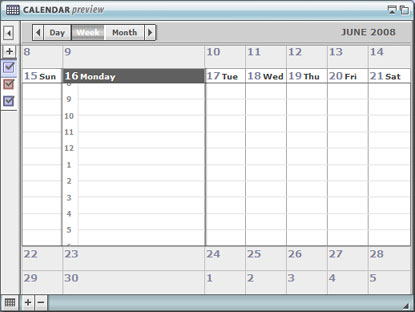OpenLaszlo 4.1 is announced and publicly available for download at download.openlaszlo.org. This is a very significant new release for a couple of reasons:
- DHTML compilation is now fully supported. In other words, OpenLaszlo applications compiled to DHTML should look and behave the same as their SWF counterparts. There will always be some differences between the runtimes (e.g. the right-click menu looks different in Flash and DHTML, SWFs won’t work as resources in DHTML, etc.).
- The OpenLaszlo documentation has been fully revamped. The tools that generate the OpenLaszlo Reference have been rewritten, and a huge effort has gone into improving the reference’s quality and accuracy. Literally masses of documentation bugs have been addressed – almost 200 in the last week alone. The OpenLaszlo Application Developer’s Guide has been expanded, corrected and improved.
Personally, I think I’m actually more excited about the polished documentation than DHTML compilation. Mainly that’s because DHTML compilation has been available for some time, although it has been a sort of “beta”. The documentation is really what helps developers create cool stuff with the product.
The other reason that OpenLaszlo 4.1 is exciting is that now that DHTML support is finished, the OpenLaszlo team can focus their efforts on SWF9 compilation. SWF9 is a very different runtime from SWF7/8. OpenLaszlo applications run up to 6x faster when compiled to SWF9 bytecode over SWF8, and now that Flash Player 9 penetration is over 97%, it’s a viable runtime for widely-deployed web applications.

